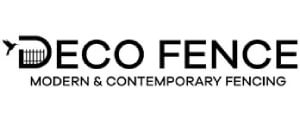How Seasonal Changes Affect Fence Longevity and Repair Needs
Fences are an essential feature for many homes, providing security, privacy, and a clear boundary. However, the changing seasons can significantly impact their durability and maintenance needs. Various weather conditions like rain, snow, sun, and wind can each contribute differently to wear and tear. Understanding how these seasonal changes affect fences can help homeowners make informed decisions about maintenance and care.
The Role of Temperature Variations
Temperature fluctuations between seasons can have a noticeable impact on fence materials. Wood fences, for example, may expand and contract with changing temperatures, leading to cracks or warping over time. This expansion and contraction can cause gaps in the fence structure, making it less effective.
Moisture’s Influence on Durability
Rain and humidity are critical factors influencing a fence’s lifespan. Excessive moisture can lead to rot in wooden fences and rust in metal ones. To combat this, regular inspection and maintenance such as staining or painting wooden fences, or applying anti-rust coatings on metal fences, can be crucial. These preventative measures not only prolong the life of a fence but also minimize future fence repair costs.
Winter Effects on Fencing
Winter brings its own set of challenges for fences. Snow accumulation can add weight and pressure to the structure, sometimes causing damage. Additionally, freezing and thawing cycles can lead to frost heave, where the soil shifts and potentially destabilizes fence posts. Addressing these issues promptly is necessary to maintain structural integrity during winter months.
Springtime Maintenance Tips
Spring is an ideal time for fence inspections and maintenance. As the ground thaws and plants start growing again, check for any damage sustained during winter. Trim back vegetation that might interfere with the fence structure. Replace broken parts to ensure your fence stays secure for the rest of the year. Investing in early spring maintenance helps avoid extensive repairs later on.
Summer Sunlight and Heat Considerations
During summer, prolonged exposure to sunlight can cause fading and brittleness, especially in wood fences. Applying UV-protective sealants can prevent discoloration and strengthen fence material against heat-induced damage. With proper protection, you reduce the likelihood of needing significant repairs during fall or winter.
Autumn Preparations for Winter
As autumn arrives, prepare your fence for upcoming colder months. Clear any leaves or debris caught around the base to prevent moisture retention that could lead to rotting. This season is also a great opportunity to reinforce weak spots before they become problematic in harsher weather conditions.
Enhancing Longevity Through Smart Practices
- Regularly inspect your fence for signs of damage
- Apply appropriate treatments based on material type
- Address minor issues promptly before they escalate
- Consider professional assistance for complex repairs
- Keep surrounding areas clear to reduce external stressors
Your Next Steps for Effective Fence Management
Seasonal changes undeniably influence your fence’s condition; thus, understanding these effects is key to proactive care. By following smart maintenance practices tailored to each season, you not only save money on extensive repairs but also extend your fence’s longevity. Located in Monterey Park, CA, we at DFC Fencing offer comprehensive services to meet all your fencing needs. Call us at (626) 249-3277 today for expert advice and support tailored to local climate challenges.

